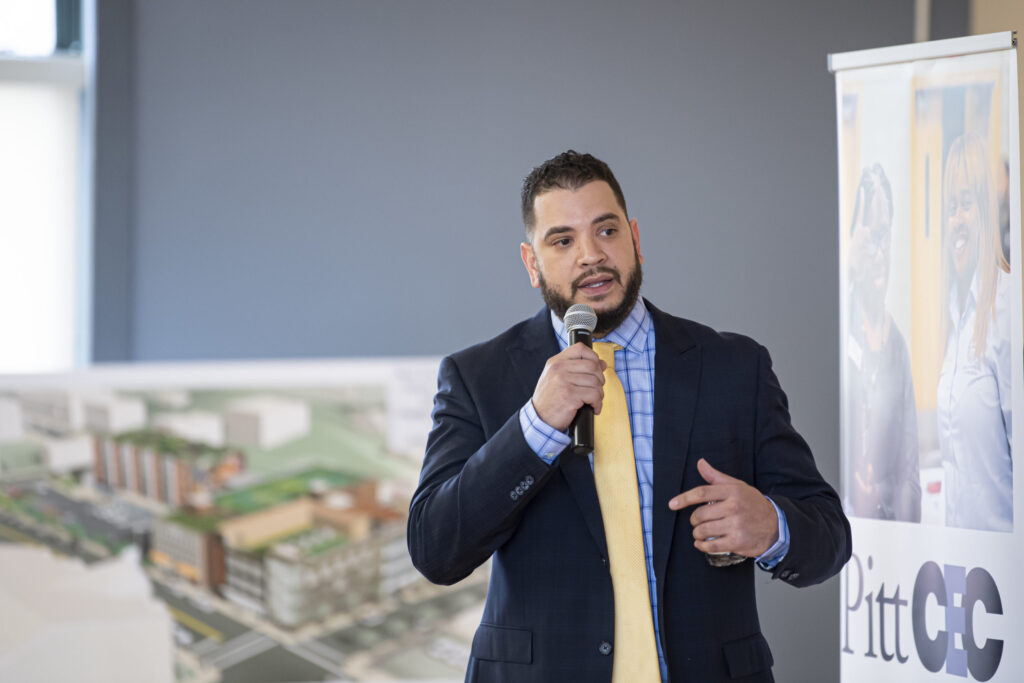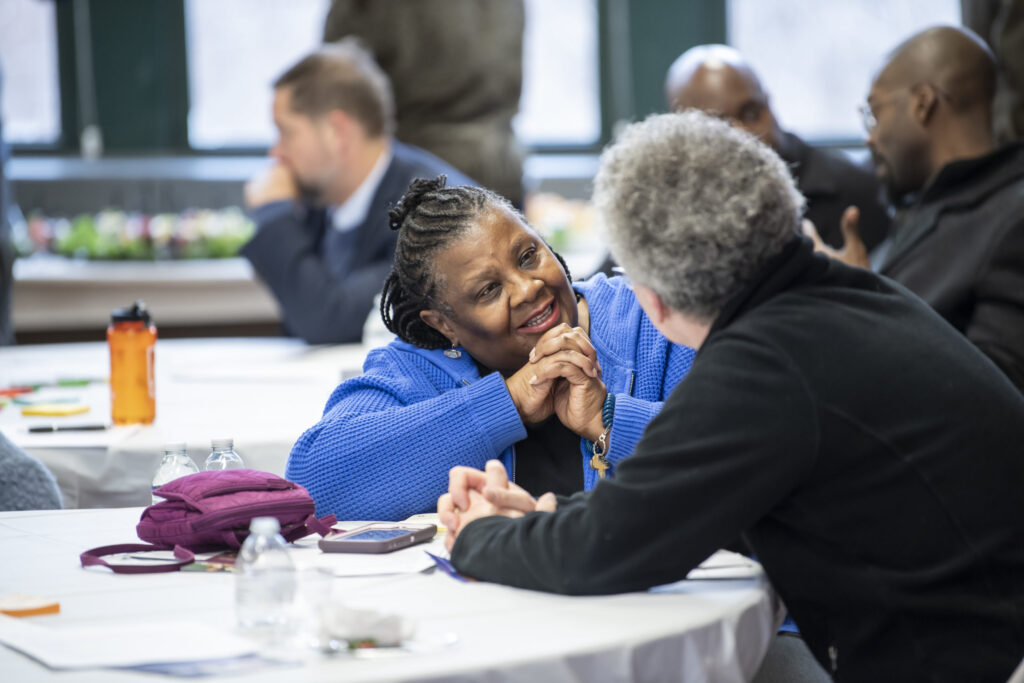As a two-hour meeting of 70+ community stakeholders drew to a close at the University of Pittsburgh’s Hill District Community Engagement Center (Hill CEC), Kirk Holbrook addressed the room: “How are you guys feeling today?”
He was answered by an ever-enthusiastic round of woos and claps.
“Does anyone want to share one word or two to describe how they’re feeling?”
“Encouraged,” one person called out.
“Hope,” another added.
A third offered a resounding, “Determination!”
On Friday, February 27, attendees gathered at the Hill CEC’s home in the Blakey Program Center to discuss a collaborative development project that will launch a new STEAM Studio to the Hill District. The project is spearheaded by five partners, including the Hill CEC, the University of Pittsburgh’s Center for Creativity, the Hill District Community Development Corporation (Hill CDC), Partner4Work, and Remake Learning’s Pittsburgh Regional STE(A)M Ecosystem. February’s meeting brought project partners together with university faculty and staff and community program providers for the first time.
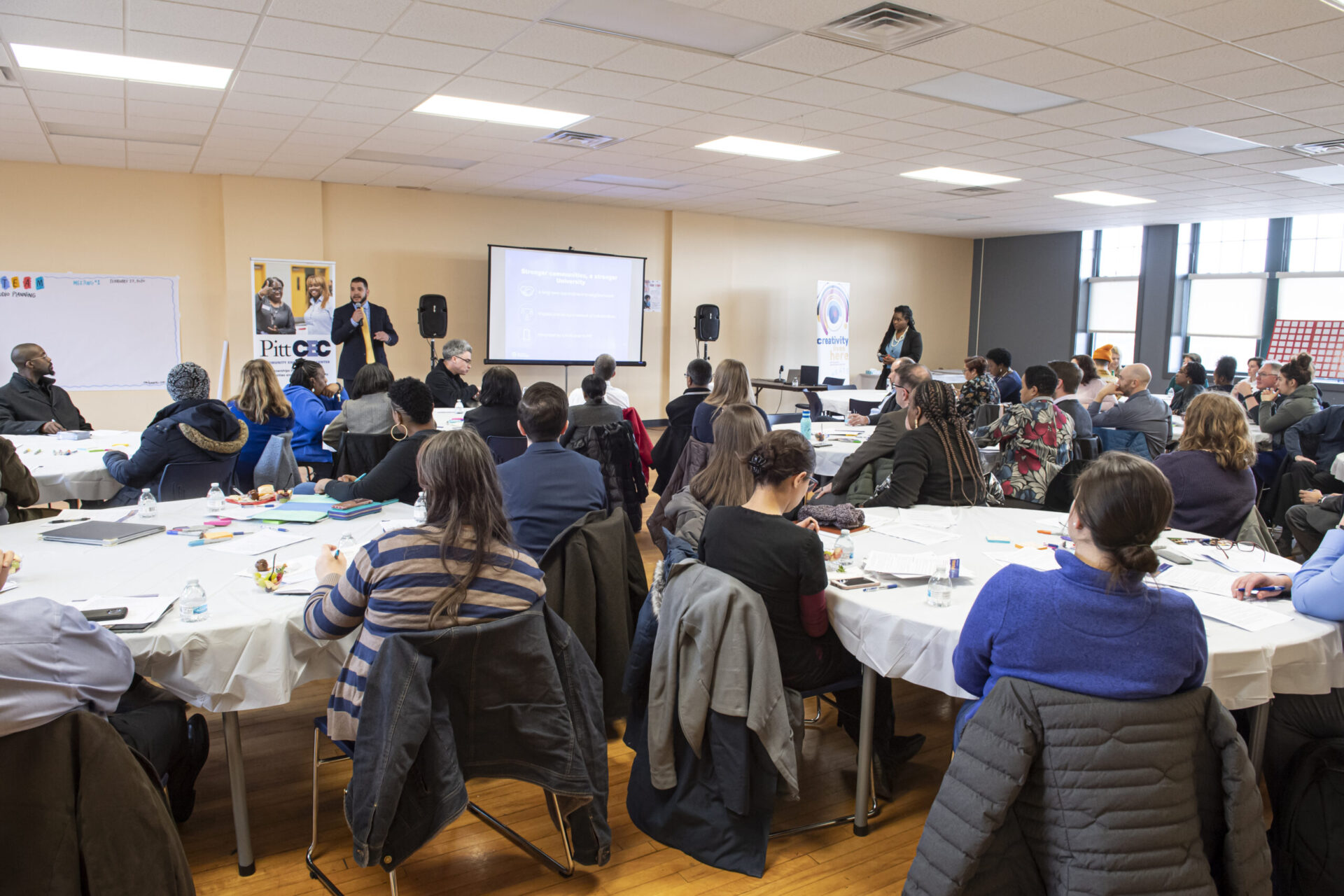
The studio will be a hub for learning and living STEAM concepts, including traditional subjects like science, technology, engineering, arts, and math, plus more diverse components like entrepreneurship, entertainment, environment, architecture, and media.
The Intersection of Community Services and Development
The studio will offer space and programming for students, artists, entrepreneurs, and learners of all ages to build economically in-demand skills; as reported by Partner4Work, the greater Pittsburgh region is expected to add 15,000 jobs in the next five years, 7,000 of which will be STEAM-related.
“How can we integrate dance with coding?” Holbrook offered as an example. “How can we teach young people mathematics through entertainment? How do we also get our adults to feel welcomed into a creative space, where they can use arts and creativity…to build their own skills?”
“This project is a shining example of the community engagement center model,” remarked Dr. Lina Dostilio, Associate Vice Chancellor for Community Engagement at the University of Pittsburgh. That model, underpinned by a 15-year commitment to Pittsburgh neighborhoods like the Hill District, offers a “front door” through which community members can access university resources and services.
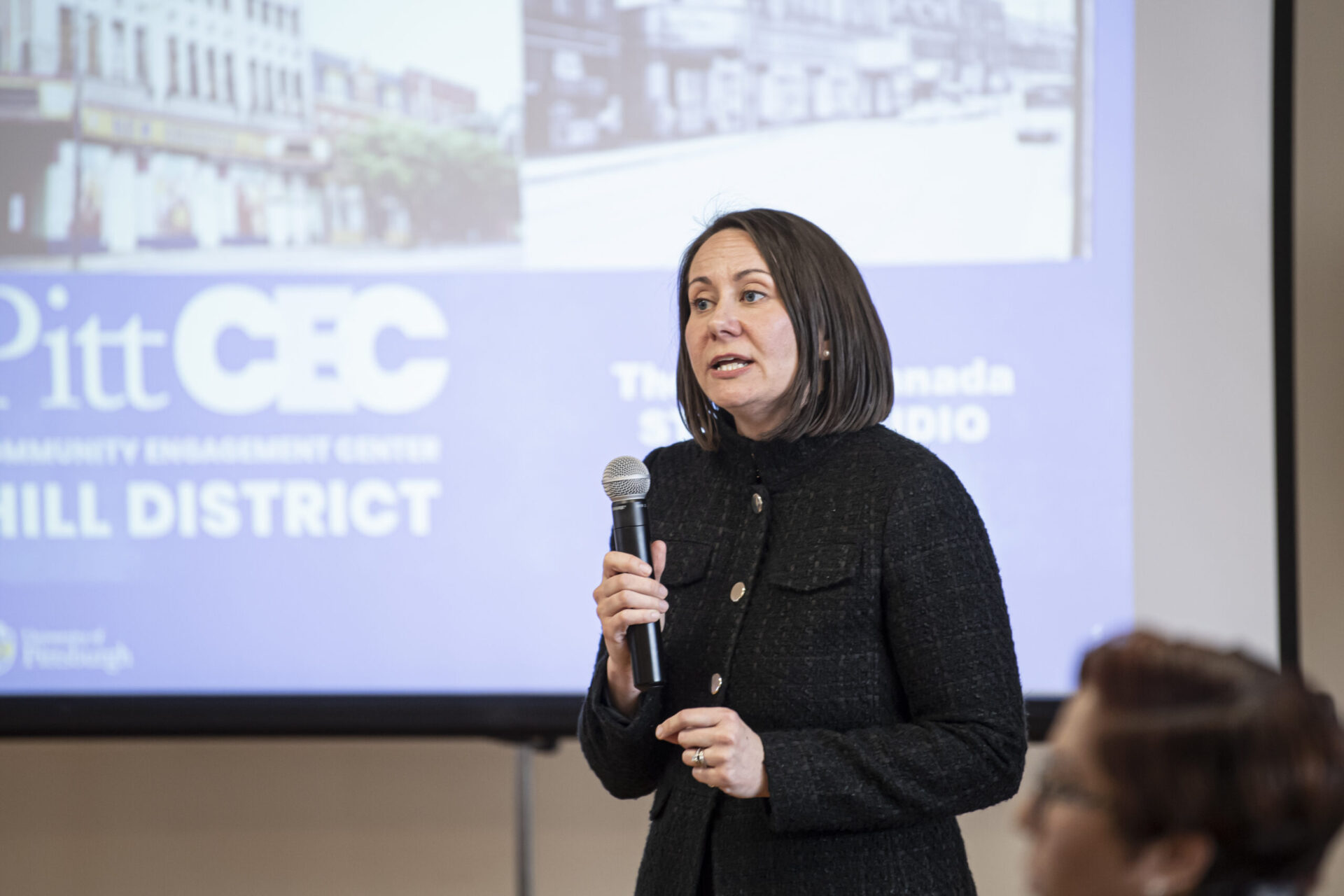
At the same time, the studio will act as the cornerstone of restorative development, cultural restoration, and economic justice in the Hill District.
The historic New Granada Theater will house the future studio and Hill CEC offices, along with a food hall, small performance space, and 900+ seat venue. The theater is owned by the Hill CDC, who plans to not only restore the building, but use the opportunity to kickstart restoration across the neighborhood with redevelopment of New Granada Square and surrounding blocks of Centre Avenue, creating a gateway to the Hill District and a new cultural and commerce corridor for the City of Pittsburgh.
Throughout it all, the studio and redevelopment project will focus on uplifting the existing cultural pride of the community and creating more opportunities for black STEAM professionals; according to Partner4Work, 87% of individuals in STEAM-related occupations in the Pittsburgh region are white.
“As we go through a process like this, we have to be mindful of how to ensure that we are not displacing or replacing culture and/or people…that are ignoring our own strengths and assets,” added Hill CDC President & CEO Marimba Milliones. “Displacement is not just about people, displacement is also about culture.”
Building on a Strong Foundation
During the meeting, Milliones also gave an overview of New Granada STEAM, a 2016 convening and summary report that laid the foundation for current development and studio plans.
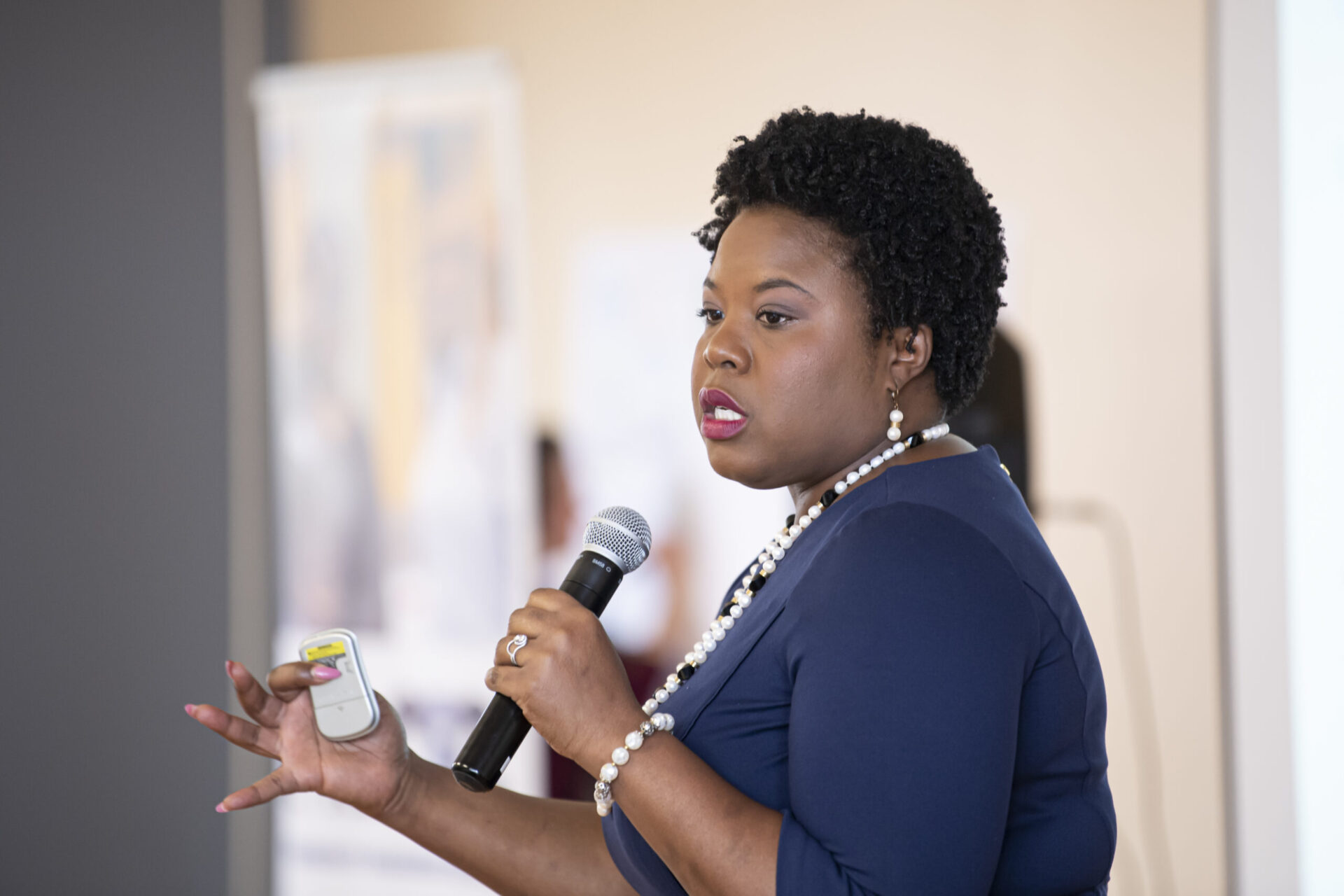
“When we got together [then], we said: ‘We’ve got to do something special and different in this historic building,’”
It was through that 2016 World Cafe convening that the Hill CDC and a community task force identified STEAM as the link needed to reconnect the Hill District to regional and global economies and workforce.
Today, Milliones said, the Hill CDC and studio partners are asking: “How can we make this space a meaningful space for our community and also leverage the asset that we have in Pittsburgh’s innovation economy?”
“That’s what I think this group can help with,” she added.
Co-Creation and the Network Process
To help coordinate the priorities, goals, and perspectives of the Hill CDC, Hill CEC, and other studio partners, the project has called on Remake Learning’s Pittsburgh Regional STE(A)M Ecosystem.
Launched in 2016, the Ecosystem connects educators with conversations and resources that make STEAM learning more accessible, engaging, and inclusive for students. The regional Ecosystem is also a member of the national STEM Learning Ecosystems, which connects educators to an even larger national and international practitioner community.
The Ecosystem will bring its network of educators, plus its convening and facilitation expertise, to the STEAM Studio project.
“We are here to support this work and connect it to the greater STE(A)M Ecosystem,” said Ecosystem lead Latrenda Leonard Sherrill. “Our young people don’t exist in silos, and neither should education.”
Sherrill co-facilitated the February 27 meeting, introducing the collaborative process organizers will use to brainstorm future studio activities with community organizations and University of Pittsburgh faculty and staff.
At the meeting, she led attendees through a Humans of New York-esque icebreaker to set the stage.
“We’re going to take some time just to listen to each other,” she said. “This co-creation process is going to take some time, it’s going to take us getting to know each other, listening intentionally, looking beyond roles, and realizing each of us bring our own creative genius to the process.”
Later in the meeting, she led attendees through a high-level programming brainstorm.
“What are the opportunities that you see for you and your work in this studio space?” she asked.
Answers ranged from business mentorship, internships, and externships, to intergenerational web design, filmmaking, public health services, sustainability activities, and visits from internationally known African American scientists, to name a few.
These ideas will take center stage in future planning meetings and through special funding opportunities.
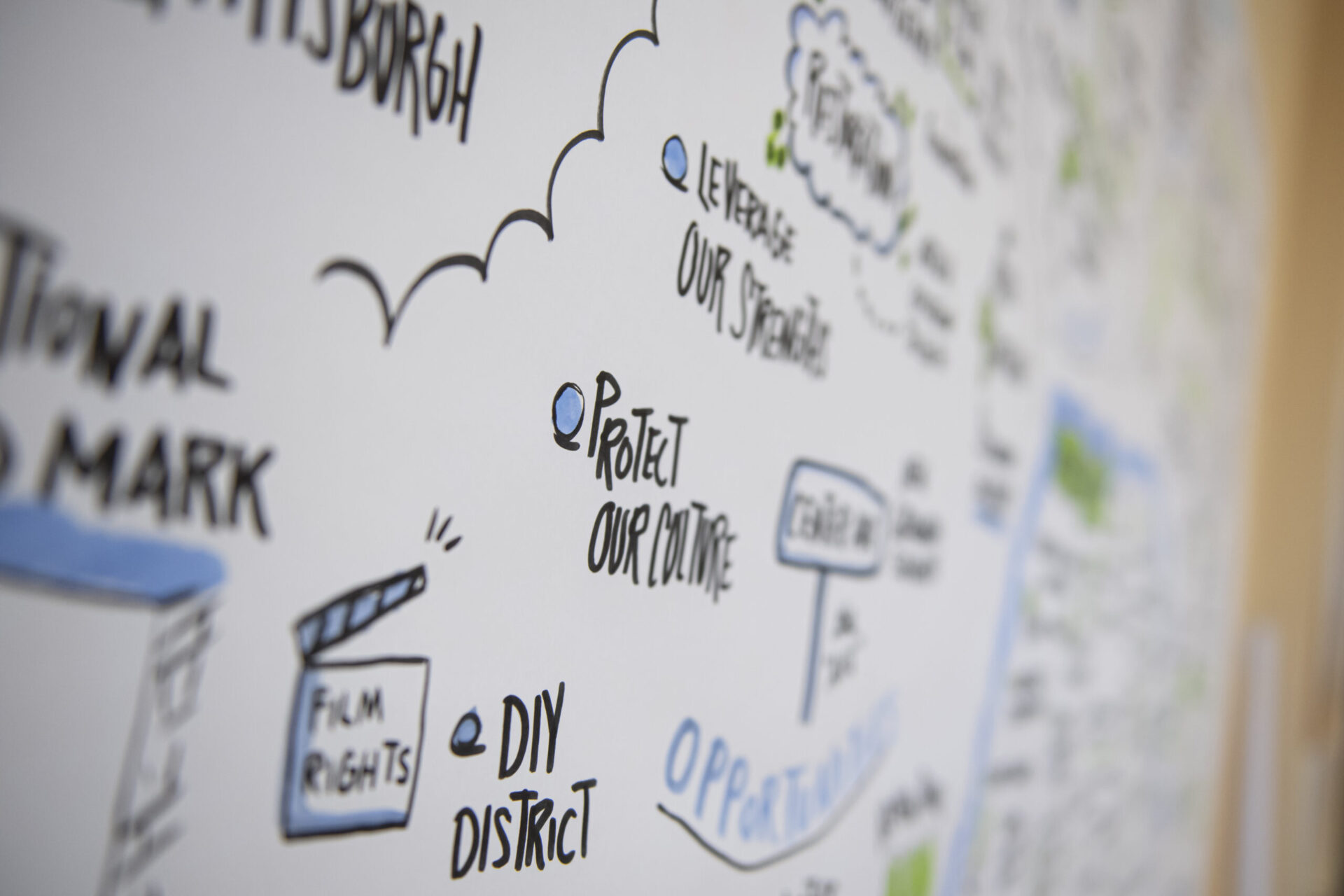
Moving Full STEAM Ahead, Together
Moving forward, stakeholders will meet over three additional planning and design meetings between April and October. There, they will dive deeper into planning studio activities.
To help the project transform ideas into tangible programming, studio organizers will also offer “seed” grants of up to $5,000 to collaborative teams of community organizations and University of Pittsburgh faculty and staff. Teams must include at least one university member and one community member, and team representatives must attend all studio planning meetings.
“This is an investment in promising projects that can become sustained, recurring activities,” explained Holbrook.
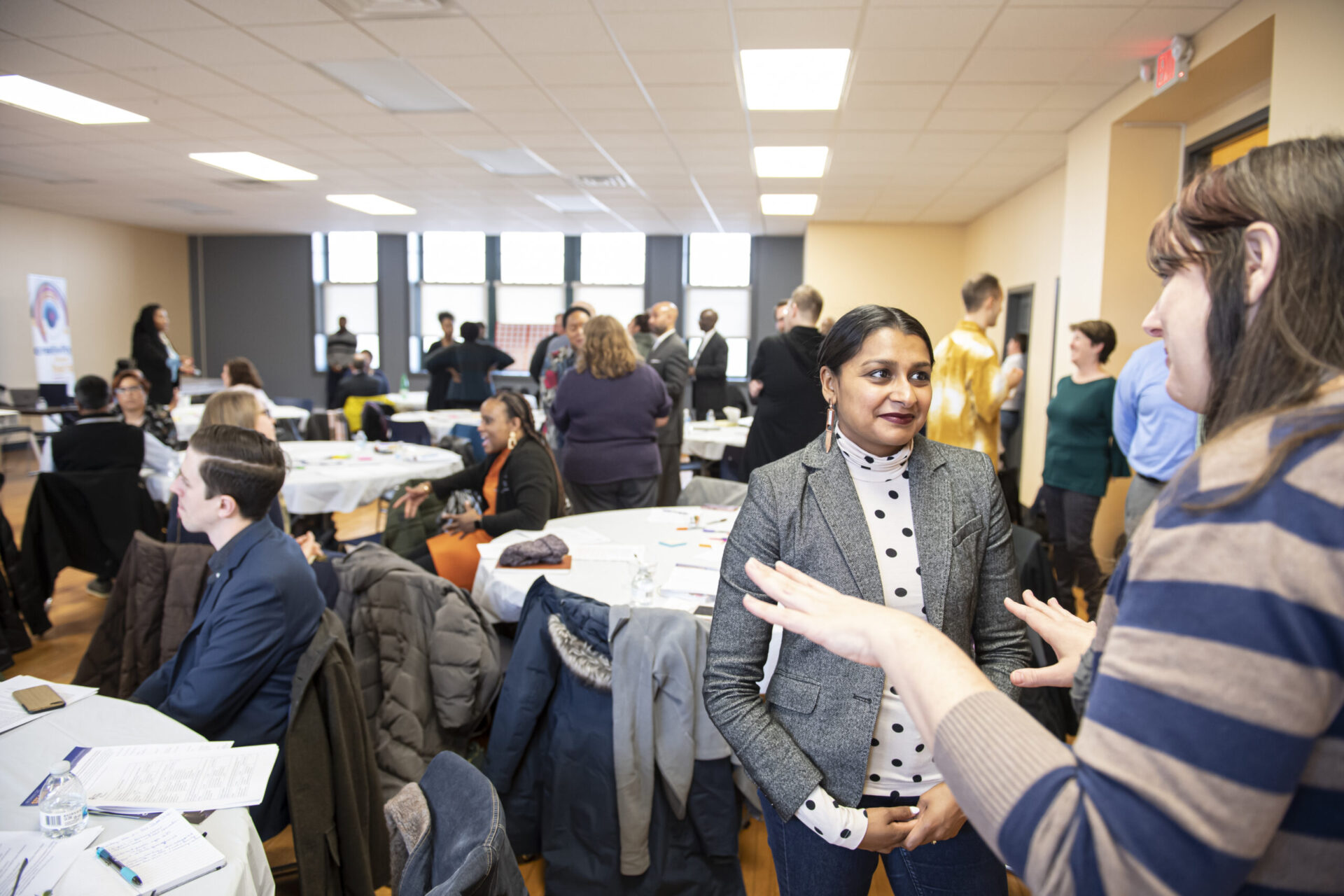
It seems, however, that the investment in learning and community has already begun–with the partners’ unique combination skills and strengths. Drawing from community development, workforce development, human services, learning innovation, and higher education, the STEAM Studio, and the team behind it, is uniquely positioned to create a powerful force for creative, economic, and educational change in the Hill District.
Holbrook brought their meeting to close with this sentiment in mind.
“When we talk about building a STEAM hub that connects the Hill District to regional, local, international economies and workforce, the fact that we have the expertise in this room, both from the university and the community, is something that is going to make what we are going to build very special,” he said. “Let’s think really big, really broad, and we’ll be able to make it all happen.”
